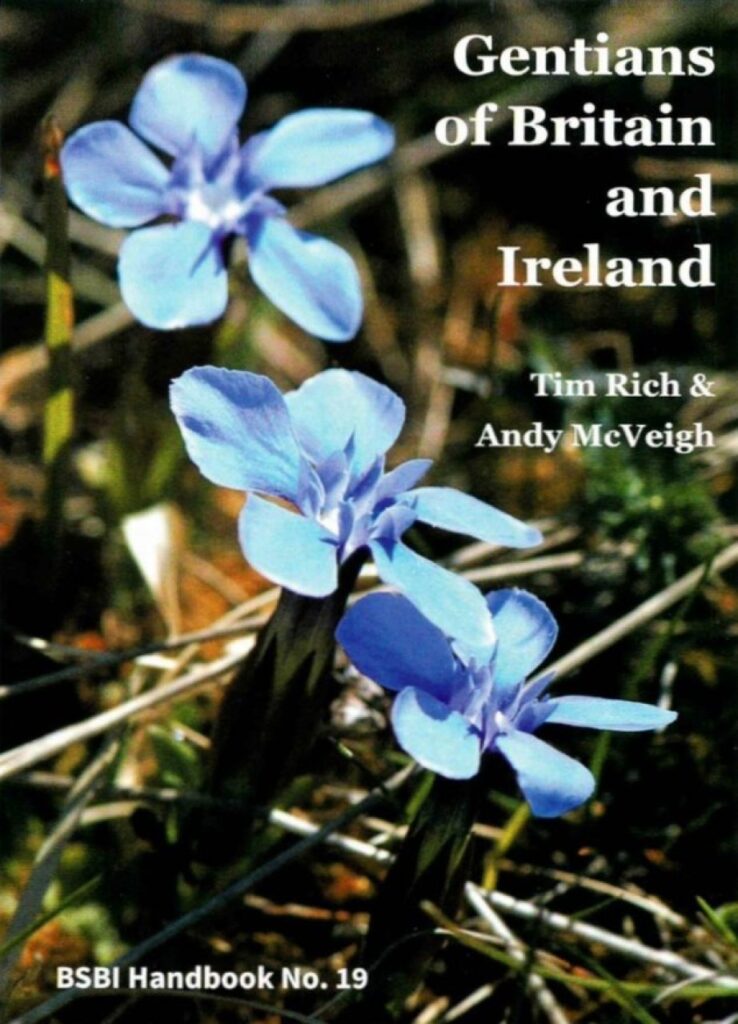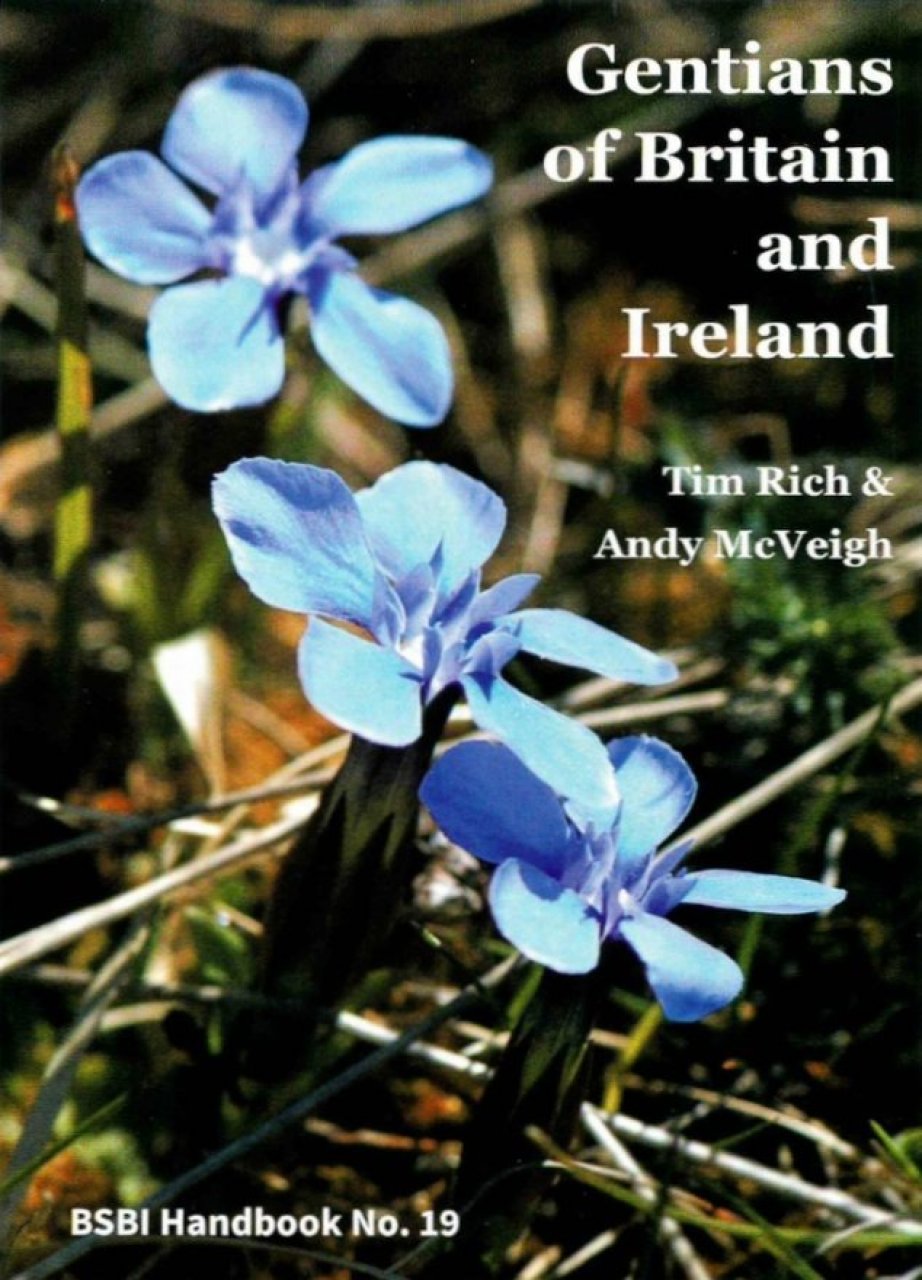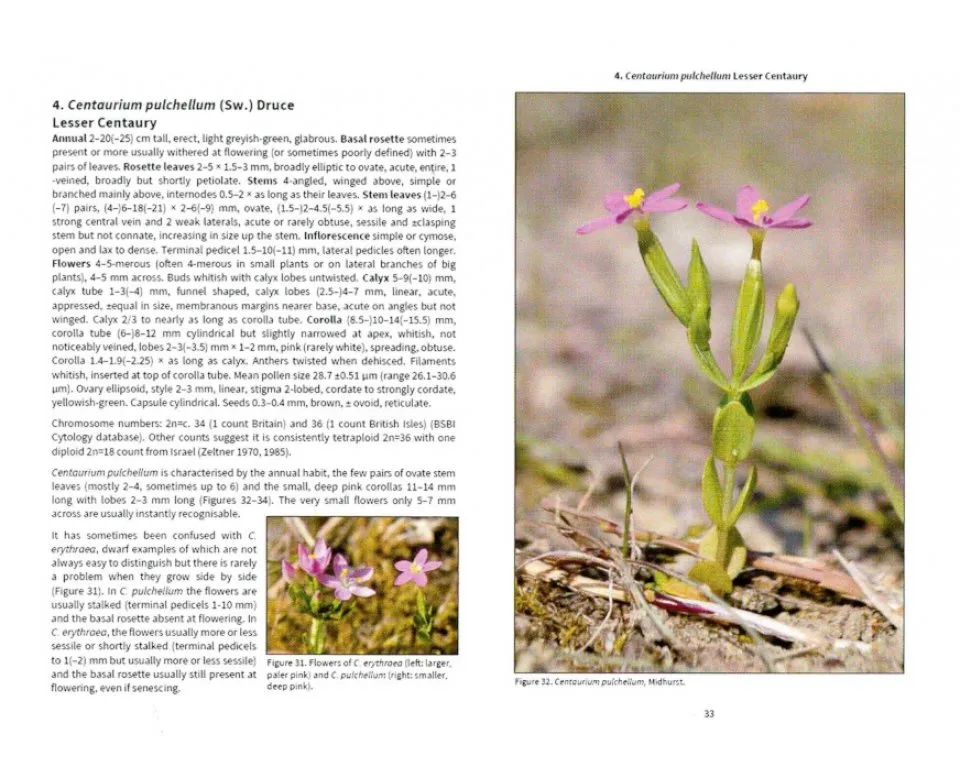Most of BSBI’s excellent handbooks on the British and Irish flora are about plants that are similar to one another, and in some cases hard to identify. At first sight gentians seem different. As a family, gentians are pretty, often of conservation interest (they indicate good-quality habitats) and not a critical group at all. Yet the two largest genera of the Gentianaceae, Gentianella (the felworts) and Centaurium (the centauries), have concentrated and confused botanical minds for decades, and indeed this handbook introduces some new changes which, one hopes, will be the last word on the matter.
By this computation the family contains 18 species in Britain and Ireland. Of these, two (Willow Gentiana asclepiadea and Trumpet Gentians G. acaulis) are neophytes, one, the Fringed Gentian Gentianopsis ciliata, is possibly extinct, and a fourth, Guernsey Centaury Exaculum pusillum, is confined to Guernsey. Two former species, Early Gentian and Dune Gentian, are now believed to be subspecies of the widespread and variable Autumn Felwort Gentianella amarella. On the other hand, the authors raise the endemic Intermediate Centaury G. intermedia to a full species (a ‘true breeding allohexaploid’ no less). The family contains quite a few endemic British forms, although mostly now at subspecies or varietal level.
View this book on the NHBS website
BSBI handbooks have to focus on identification rather than ecology and conservation, and within a fairly rigid format, but all the same this handbook manages to cover a lot of ground, including distribution (with updated dot-maps), variation and hybrids, discovery dates and what those Latin names mean, reproductive biology, and population trends, which in all too many cases are firmly downhill. The colour photographs of the plants are generally good. The habitat shots are too small and, in some cases, rather dark.
May I add a personal note about ‘conservation status’. The survival of any species has little to do with conservation bureaucracy and everything to do with ecology. For example, the survival of the Spring Gentian in Britain has nothing to do with legal protection, nor with its ‘threat status’ of ‘Vulnerable’. It survives in the overgrazed fells of northern England because it can exist indefinitely as vegetative clones, even when the sheep graze all the flowers. I should know. I once spent a year of my life helping to prove it.



